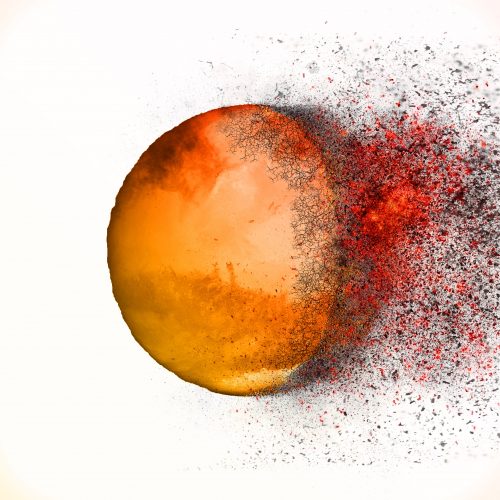Illustration by Ellie Gabriel.
Over billions of years, Mars transformed from a wet planet with a thick atmosphere to one characterized by dry, cold terrain and a thin atmosphere. One of NASA’s longstanding goals is to understand how this happened. In a recent paper in Science, NASA researchers working on the Mars Atmosphere and Volatile Evolution Mission (MAVEN) revealed that they did something rare: they collected two missions’ worth of data on Mars’s atmosphere for the price of one.
MAVEN was intended as a mission to collect data on the current composition of Mars’s upper atmosphere and characterize the escape of particles into space. By repurposing the spacecraft’s mass spectrometer, which separates particles by mass, NASA scientists were also able to take comprehensive wind measurements, mapping the global circulation patterns in the upper atmosphere of a planet besides Earth for the very first time. They observed that Mars’s circulation patterns were less complex than Earth’s, with winds closely following the land surfaces below them. The new global circulation data can also improve existing models, an achievement made all the more groundbreaking “because we got [the information] for free,” said Mehdi Benna, the scientist who first suggested repurposing the spectrometer.
Every NASA space mission is a feat of coordination. Over several years, scientists, engineers, accountants, and countless other professionals collaborate to bring humanity one step closer to unfurling the secrets of the cosmos. “I’m more in admiration of the people who put the mission together than anything else,” he said. Benna believes that ultimately, MAVEN will serve as a reminder of the magnitude of human ingenuity.
Sources:
Benna, M., Bougher, S.W., Lee, Y., Roeten, K.J., Yigit, E., Mahaffy, P.R., & Jakosky, B.M.
(2019). Mapping winds in Mars upper atmosphere. Science, 366 (6471), 1363-1366. doi: 10.1126/science.aax1553.
Hille, K. (2015, February 24). MAVEN. Retrieved February 4, 2020, from https://www.nasa.gov/mission_pages/maven/main/index.html.
Benna, M. (2020, January 29). Phone Interview.

